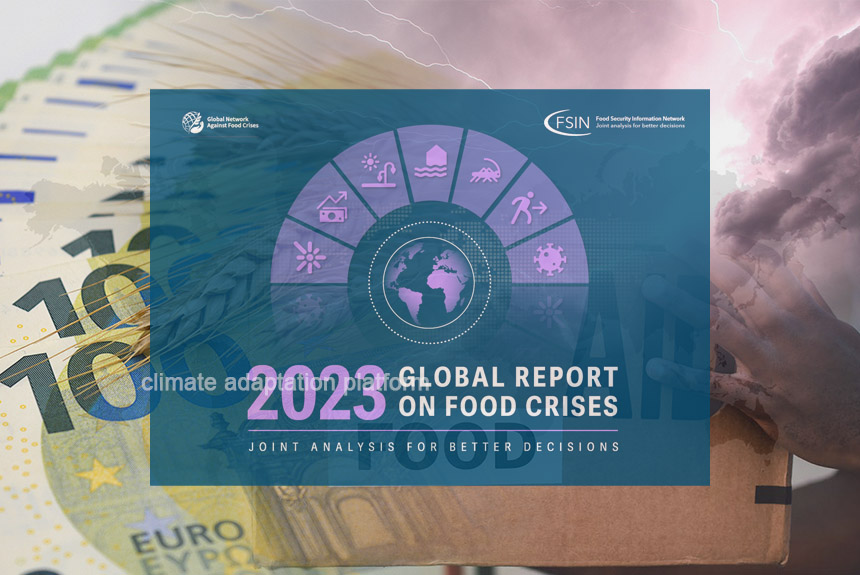The Global Report on Food Crises 2023 is the 7th annual report prepared by the Food Security Information Network with contributions from 16 GRFC partner organisations.
The report shows that the number of people facing high levels of food insecurity is increasing due to economic shocks, conflicts, and weather extremes.
In 2022, around 258 million people across 58 countries and territories faced acute food insecurity at crisis or worse levels (IPC/CH Phase 3-5) based on data obtained through the Integrated Food Security Integrated Food Security Phase Classification (IPC) or the Cadre Harmonisé (CH), which estimate the populations in need of food, nutrition and livelihood assistance.
Since the GRFC started reporting in 2017, the number of countries and populations analysed has increased from 48 countries in 2016 to 58 countries in 2022 – the highest on record since reporting began.
This report marks the fourth consecutive year (from 2019 to 2022) that the number of people in IPC/CH Phase 3 or above or equivalent is rising year on year due to persistently high numbers in some countries, worsening situations in others, and increased analysis.
GRFC’s Integrated Food Security Phase Classification or the Cadre Harmonisé (IPC/CH) describes the acute food insecurity phase and provides response objectives.
| Phase | Phase description and priority response objectives |
| Phase 1 None/Minimal | Households can meet essential food and non-food needs without engaging in atypical and unsustainable strategies to access food and income. Action is required to build resilience and reduce disaster risk. |
| Phase 2 | Stressed Households have minimally adequate food consumption but cannot afford some essential non-food expenditures without engaging in stress-coping strategies. Action is required for disaster risk reduction and to protect livelihoods. |
| Phase 3 Crisis | Households either: • have food consumption gaps that are reflected by high or above-usual acute malnutrition; or • are marginally able to meet minimum food needs but only by depleting essential livelihood assets or through crisis-coping strategies. URGENT ACTION is required to protect livelihoods and reduce food consumption gaps. |
| Phase 4 Emergency | Households either: • have large food consumption gaps, which are reflected in very high acute malnutrition and excess mortality, or • can mitigate large food consumption gaps only by employing emergency livelihood strategies and asset liquidation. URGENT ACTION is required to save lives and livelihoods. |
| Households have an extreme lack of food and/or other basic needs even after fully employing coping strategies. Starvation, death, destitution, and extremely critical acute malnutrition levels are evident. (For Famine classification, the area needs to have extremely critical levels of acute malnutrition and mortality.) URGENT ACTION is required to revert/prevent widespread death and total collapse of livelihood | Households either: • have large food consumption gaps, which are reflected in very high acute malnutrition and excess mortality, or • can mitigate large food consumption gaps only by employing emergency livelihood strategies and asset liquidation. URGENT ACTION is required to save lives and livelihoods. |
More than 40 per cent of the population in IPC/CH Phase 3 or above or equivalent in the GRFC 2023 resided in just five countries/territories: the Democratic Republic of the Congo, Ethiopia, Afghanistan, Nigeria (21 states and the Federal Capital Territory (FCT)), and Yemen.
People in seven countries faced an extreme lack of food even after fully employing coping strategies at some point during 2022. Over half of the 376 400 people in the Catastrophe (IPC/CH Phase 5) were in Somalia (214,100). Still, these extreme conditions also affected populations in South Sudan (87,000), Yemen (31,000), Afghanistan (20,300), Haiti for the first time in GRFC history (19,200), Nigeria (3,000), and Burkina Faso (1,800).
Around 35 million people were in Emergency (IPC/CH Phase 4) in 39 countries. No disaggregated data by IPC phase were available for Ethiopia or Zimbabwe in 2022. Households in this extremely severe situation face large food gaps, which are either reflected in high acute malnutrition rates and excess mortality or mitigated by the use of emergency coping strategies. Around half of the total population identified in IPC/CH Phase 4 was found in four countries – Afghanistan, Yemen, the Democratic Republic of the Congo, and the Sudan.
The impact of the war in Ukraine on global food crises
The report also highlights the devasting impacts of the war in Ukraine that began in February 2022 while the global economy was still recovering from the effects of the COVID-19 pandemic. Russia’s invasion of Ukraine sparked trade disruptions and significant increases in international prices for energy, agricultural commodities, and fertiliser, which were already high due to the impacts of the COVID-19 pandemic, including value chain disruptions.
Although global food and fertilizer prices have fallen from their peak levels, they remain high compared to pre-COVID levels, contributing to high domestic food price inflation in many low—and middle-income countries.
Read the 2023 Global Report on Food Crises



Leave a Reply